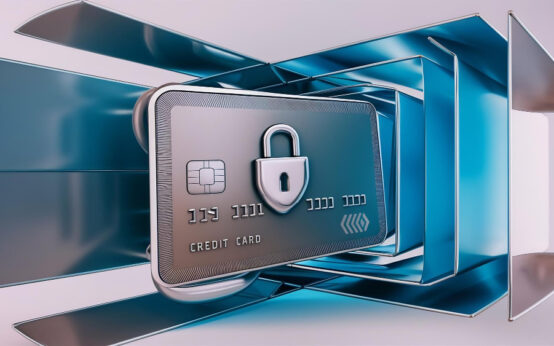When it comes to protecting your purchases, Credit Cards with Purchase Protection are a must-have. They offer financial security and peace of mind. In this article, we explore why purchase protection matters, the top credit cards offering it, and how you can make the most of these benefits.
Why Purchase Protection Matters
Purchase protection is a feature that provides a safety net for consumers, ensuring that they are covered in case of issues with their purchases, such as damage or theft. This not only offers peace of mind but also financial security when dealing with unexpected mishaps.
One of the primary advantages of purchase protection is that it helps you avoid unnecessary expenses. If an item you bought is damaged or stolen within a specific period, your credit card issuer can reimburse you, saving you the cost of replacing it. This benefit is particularly useful for high-value items like electronics, jewelry, or luxury goods.
Another important aspect is the ease of the process. Typically, to avail of purchase protection, you need to provide proof of purchase and evidence of the damage or theft. Credit card companies often have streamlined procedures, making it simple to file a claim and get reimbursed.
Moreover, purchase protection can extend beyond typical disasters. Depending on the card issuer, it can cover a wide range of incidents, offering extensive protection for your purchases. This can include accidental damage or even issues caused by natural disasters.
Understanding the specifics of your card’s purchase protection benefits is crucial. Each card has different terms and conditions, including claim windows, coverage limits, and eligible items. Familiarizing yourself with these details ensures that you can take full advantage of the coverage when needed.
Top Credit Cards Offering Purchase Protection

Top Credit Cards Offering Purchase Protection often include a range of benefits designed to secure your purchases against theft, damage, and more. These credit cards go a step beyond the standard purchase protection, offering extended warranties, price protection, and even return protection in some cases.
Chase Sapphire Preferred
With up to $500 per claim and $50,000 per account, the Chase Sapphire Preferred card provides robust purchase protection. Items are covered for damage or theft within 120 days of purchase.
American Express Gold Card
Offering up to $1,000 per occurrence and $50,000 per year, the American Express Gold Card extends purchase protection for up to 90 days from the date of purchase. This card is ideal for those looking to secure high-value items.
Citi Premier Card
The Citi Premier Card covers your new purchases against damage or theft for 90 days, with a coverage limit of $1,000 per item and $50,000 per year. This card also extends to cover stolen cellphones.
Purchase protection is not limited to premium cards. Even some no-annual-fee cards, like the Chase Freedom Flex, offer coverage for new purchases up to $500 per claim and $1,000 per year.
Compare these options based on your spending habits and the types of items you often purchase. It is crucial to read through the terms and conditions to understand the claim process and any exclusions or limitations that may apply.
How to Maximize Purchase Protection Benefits
When it comes to maximizing purchase protection benefits, being informed and proactive is key. First, always read the terms and conditions of your credit card’s purchase protection policy. This will help you understand what’s covered and what’s not, as well as any time limits or exclusions that apply.
Next, keep all your receipts and documentation for purchases. This evidence is crucial if you need to file a claim. It’s a good idea to maintain both physical and digital copies. Some credit cards even offer digital receipt storage in their apps for added convenience.
Whenever possible, register your purchases with the credit card issuer. Registration can sometimes speed up the claims process and provide an additional layer of record-keeping.
Another important step is to act quickly in the event of theft or damage. As soon as an incident occurs, report it to your credit card issuer. Delaying this can sometimes lead to claim denial due to missed reporting deadlines.
It’s also beneficial to understand the claim process thoroughly. Knowing the necessary steps and documentation required can prevent delays. Many issuers provide a detailed guide on their websites or customer service lines.
Lastly, be aware of any limitations and exclusions. Some cards might not cover items like electronics or specific types of damage. Knowing these details upfront can help you make informed purchases and protect your investments effectively.
Common Misconceptions About Purchase Protection

One misconception is that purchase protection is the same as an extended warranty. While both offer some level of coverage, they are not interchangeable. Extended warranties typically cover malfunctions after the manufacturer’s warranty ends, whereas purchase protection covers damage or theft within a specific time frame after the purchase.
Another myth is that purchase protection covers all types of purchases. Not all items are eligible; usually, perishable goods, used items, and motor vehicles are excluded.
Many people wrongly believe that filing a claim is too complicated. However, credit card companies have streamlined the process, often allowing you to file online or over the phone with just a few documents.
Some consumers think that purchase protection incurs additional fees. In reality, this benefit is often included as part of the cardholder agreement without extra cost. The main requirement is to use the card for the purchase.
It’s also false to assume that purchase protection covers only large purchases. Items of all values are generally eligible, offering peace of mind for everyday purchases as well.
Steps to File a Purchase Protection Claim
- Review Your Credit Card Policy: The first step to filing a purchase protection claim is to carefully review your credit card’s purchase protection policy. Each card issuer has different terms, conditions, and coverage limits.
- Collect Necessary Documentation: Gather all receipts, invoices, and any other pertinent documents related to your purchase. This includes shipment tracking information and communication with the seller.
- Contact the Merchant: Before contacting your credit card issuer, attempt to resolve the issue directly with the merchant. This demonstrates good faith and sometimes directly resolves the issue.
- Fill Out Required Forms: Visit your credit card issuer’s website or call their customer service to get the requisite claim forms. Fill these out accurately and attach the necessary documentation.
- Submit Your Claim Promptly: Purchase protection claims often have strict time limits. Ensure that all documentation and forms are submitted within the window specified by your credit card issuer.
- Follow Up: Stay in touch with your credit card company to ensure your claim is being processed. Keep a record of all your interactions for reference.
- Understand Possible Outcomes: Be prepared for any possible outcomes, whether it’s approval, denial, or the need for additional information. Knowing how the process works will better equip you to handle the next steps.



 Best credit cards secured: your path to a stronger credit history <p style='text-transform:none; line-height:20px !important; font-size:16px; font-weight:normal; color:#424242; margin: 0px; margin-top:10px;'>They offer a smart way to show lenders you’re serious about managing your finances.</p>
Best credit cards secured: your path to a stronger credit history <p style='text-transform:none; line-height:20px !important; font-size:16px; font-weight:normal; color:#424242; margin: 0px; margin-top:10px;'>They offer a smart way to show lenders you’re serious about managing your finances.</p>  The best credit cards for lounge access: your key to premium airport comfort <p style='text-transform:none; line-height:20px !important; font-size:16px; font-weight:normal; color:#424242; margin: 0px; margin-top:10px;'>With these cards, you have exclusive access to lounges, offering comfort while you wait for your flight.</p>
The best credit cards for lounge access: your key to premium airport comfort <p style='text-transform:none; line-height:20px !important; font-size:16px; font-weight:normal; color:#424242; margin: 0px; margin-top:10px;'>With these cards, you have exclusive access to lounges, offering comfort while you wait for your flight.</p>  Safe, simple, and fun: discover the best debit cards for kids <p style='text-transform:none; line-height:20px !important; font-size:16px; font-weight:normal; color:#424242; margin: 0px; margin-top:10px;'>These cards offer the flexibility and convenience that both parents and kids need.</p>
Safe, simple, and fun: discover the best debit cards for kids <p style='text-transform:none; line-height:20px !important; font-size:16px; font-weight:normal; color:#424242; margin: 0px; margin-top:10px;'>These cards offer the flexibility and convenience that both parents and kids need.</p>